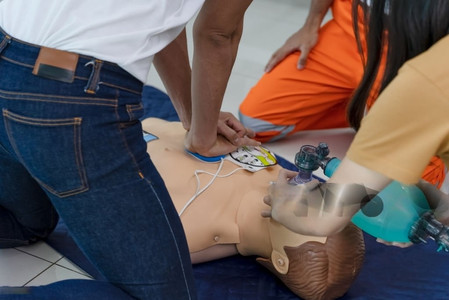Boost Your Confidence in CPR and First Aid with Refresher Training
- Darrell Reeves
- Feb 29, 2024
- 2 min read
Has it been a while since you last refreshed your CPR and first aid skills? Life gets busy, and it's easy for those essential skills to slip to the back of your mind. But when an emergency strikes, you want to be ready to spring into action with confidence. That's where CPR and first aid refresher training comes in. In this blog post, we'll explore why refresher training is crucial and how it can help you regain your confidence to care for others in times of need.
The Importance of CPR and First Aid Refresher Training:
CPR and first aid skills are like any other skill – they require practice to stay sharp. Even if you've been certified in the past, it's essential to refresh your knowledge and techniques regularly. Here's why:
1.Lifesaving Knowledge: CPR and first aid techniques evolve over time as new research and guidelines emerge. Refresher training ensures you're up-to-date on the latest best practices, increasing the likelihood of a positive outcome in an emergency.
2.Confidence Boost: Confidence is key when it comes to responding effectively in an emergency. Refresher training reinforces your skills, boosts your confidence, and prepares you to act decisively when seconds count.
3.Retention of Skills: Without regular practice, skills can fade over time. Refresher training helps reinforce muscle memory and ensures you can perform CPR and first aid techniques correctly and effectively.
4.Adaptation to Change: Circumstances and environments can vary during emergencies. Refresher training equips you with the flexibility to adapt your skills to different situations, whether you're assisting a child, an adult, or an elderly person.
What to Expect from CPR and First Aid Refresher Training:
Now that you understand why refresher training is crucial, let's take a look at what you can expect from a typical CPR and first aid refresher course:
Review of Basics: Refresher courses typically start with a review of the basics, including the ABCs of CPR (Airway, Breathing, Circulation) and the primary steps of first aid.
1.Hands-On Practice: Hands-on practice is a cornerstone of refresher training. You'll have the opportunity to practice CPR techniques on manikins, simulate bandaging wounds, and learn how to use automated external defibrillators (AEDs).
2.Scenario-Based Learning: Many refresher courses incorporate scenario-based learning, where you'll work through simulated emergencies to apply your skills in a realistic setting.
3.Interactive Discussions: Refresher training often includes interactive discussions and case studies to deepen your understanding of CPR and first aid principles and reinforce key concepts.
4.Certification Renewal: Upon successful completion of the refresher course, you'll typically receive a certification renewal, validating your competency in CPR and first aid for another period.
Conclusion:
CPR and first aid refresher training is not just a checkbox to tick; it's an investment in your ability to save lives and make a difference in emergencies. By staying current with your skills, you can regain your confidence to care for others when they need it most.
So, if it's been a while since you last refreshed your CPR and first aid knowledge, don't wait any longer.









Comments